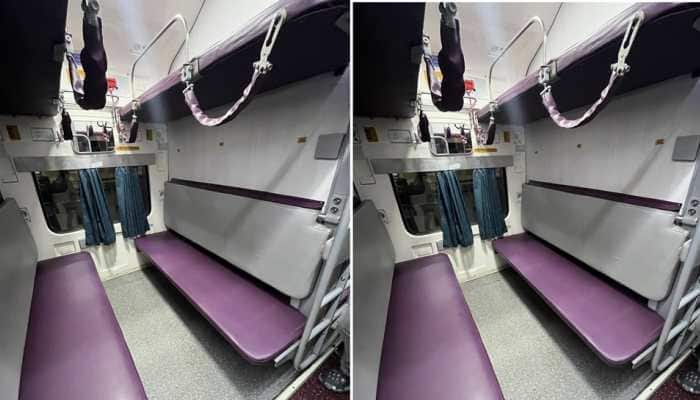Tiny devices that can control nuclear reactor are here
Call it future technology as engineers from University of Utah have fabricated the smallest plasma transistors that can withstand high temperatures and ionising radiation found in a nuclear reactor.
Trending Photos
)
 Washington: Call it future technology as engineers from University of Utah have fabricated the smallest plasma transistors that can withstand high temperatures and ionising radiation found in a nuclear reactor.
In the near future, such transistors may enable smart phones that take and collect medical X-rays on a battlefield and devices to measure air quality in real time.
“These plasma-based electronics can be used to control and guide robots to conduct tasks inside the nuclear reactor,” said Massood Tabib-Azar, a professor of electrical and computer engineering.
Microplasma transistors in a circuit can also control nuclear reactors if something goes wrong, and also could work in the event of nuclear attack.
Plasma-based transistors, which use charged gases or plasma to conduct electricity at extremely high temperatures, are employed currently in light sources, medical instruments and certain displays under direct sunlight.
These microscale devices are about 500 microns long, or roughly the width of five human hairs.
The new devices are the smallest microscale plasma transistors to date. They measure 1 micron to 6 microns in length, or as much as 500 times smaller than current state-of-the-art microplasma devices, and operate at one-sixth the voltage.
“They also can operate at temperatures up to 1,450 degrees Fahrenheit. Since nuclear radiation ionises gases into plasma, this extreme environment makes it easier for plasma devices to operate,” electrical engineering doctoral student Pradeep Pai added.
Plasmas are great for extreme environments because they are based on gases such as helium, argon and neon that can withstand high temperatures.
According to Tabib-Azar, this transistor has the potential to start a new class of electronic devices that are happy to work in a nuclear environment.
These plasma devices could also be used as an X-ray imaging source in the next five years.
Because the device dimensions are so small, X-ray images from a wounded soldier in the field could be collected on a smart phone equipped with transistors that also generate the X-rays, Tabib-Azar explained.
In another five years, the devices could be used to detect and identify aerosol pollutants based on the colour emitted when the substance passes through the device.
These chemical sensing devices could be used to quantitatively monitor air quality in real time and enable researchers to construct an accurate air-quality map.
The research appeared in the journal IEEE Electron Device Letters, published by the Institute of Electrical and Electronics Engineers.
Washington: Call it future technology as engineers from University of Utah have fabricated the smallest plasma transistors that can withstand high temperatures and ionising radiation found in a nuclear reactor.
In the near future, such transistors may enable smart phones that take and collect medical X-rays on a battlefield and devices to measure air quality in real time.
“These plasma-based electronics can be used to control and guide robots to conduct tasks inside the nuclear reactor,” said Massood Tabib-Azar, a professor of electrical and computer engineering.
Microplasma transistors in a circuit can also control nuclear reactors if something goes wrong, and also could work in the event of nuclear attack.
Plasma-based transistors, which use charged gases or plasma to conduct electricity at extremely high temperatures, are employed currently in light sources, medical instruments and certain displays under direct sunlight.
These microscale devices are about 500 microns long, or roughly the width of five human hairs.
The new devices are the smallest microscale plasma transistors to date. They measure 1 micron to 6 microns in length, or as much as 500 times smaller than current state-of-the-art microplasma devices, and operate at one-sixth the voltage.
“They also can operate at temperatures up to 1,450 degrees Fahrenheit. Since nuclear radiation ionises gases into plasma, this extreme environment makes it easier for plasma devices to operate,” electrical engineering doctoral student Pradeep Pai added.
Plasmas are great for extreme environments because they are based on gases such as helium, argon and neon that can withstand high temperatures.
According to Tabib-Azar, this transistor has the potential to start a new class of electronic devices that are happy to work in a nuclear environment.
These plasma devices could also be used as an X-ray imaging source in the next five years.
Because the device dimensions are so small, X-ray images from a wounded soldier in the field could be collected on a smart phone equipped with transistors that also generate the X-rays, Tabib-Azar explained.
In another five years, the devices could be used to detect and identify aerosol pollutants based on the colour emitted when the substance passes through the device.
These chemical sensing devices could be used to quantitatively monitor air quality in real time and enable researchers to construct an accurate air-quality map.
The research appeared in the journal IEEE Electron Device Letters, published by the Institute of Electrical and Electronics Engineers.Stay informed on all the latest news, real-time breaking news updates, and follow all the important headlines in india news and world News on Zee News.
Advertisement
Live Tv
Advertisement







)
)
)
)
)
)
)
)
)
)
